
 Data Structure
Data Structure Networking
Networking RDBMS
RDBMS Operating System
Operating System Java
Java MS Excel
MS Excel iOS
iOS HTML
HTML CSS
CSS Android
Android Python
Python C Programming
C Programming C++
C++ C#
C# MongoDB
MongoDB MySQL
MySQL Javascript
Javascript PHP
PHP
- Selected Reading
- UPSC IAS Exams Notes
- Developer's Best Practices
- Questions and Answers
- Effective Resume Writing
- HR Interview Questions
- Computer Glossary
- Who is Who
PN Junction Theory of Semiconductor Diode
When a p–type semiconductor is suitably joined to n–type semiconductor, the contact surface of the semiconductors is called as pn–junction.
Properties of pn – junction
The p–type semiconductor has holes and the n–type semiconductor has free electrons as the majority charge carriers. When both p–type and n-type materials are suitably joined together to form pn–junction. At the junction, the free electrons from the n–side diffuse over to the p–side and the holes from the p–side to the n–side. Since both the materials are electrically neutral, so a positive charge is build up on the n–side of the junction and negative charge on the p–side of the junction. This created charge soon prevents further diffusion. It is because the positive charge on n–side repels the holes crossing the junction from p–side to n–side and negative charge on p–side repels the electrons crossing the junction from n-side to p–side. Thus, a barrier is set up against the movement of charge carriers across the junction. This is called Potential Barrier (VB). The value of VB ranges from 0.1 to 0.7 V.
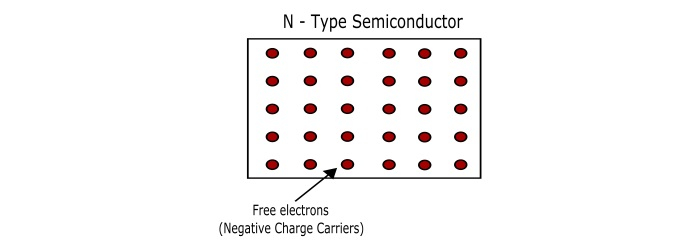
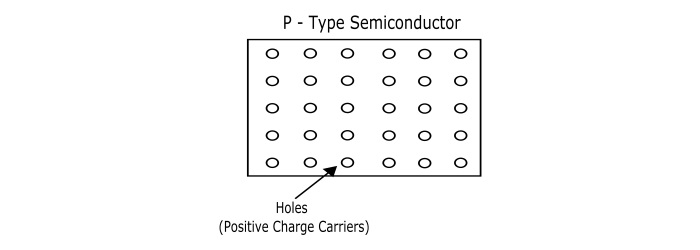
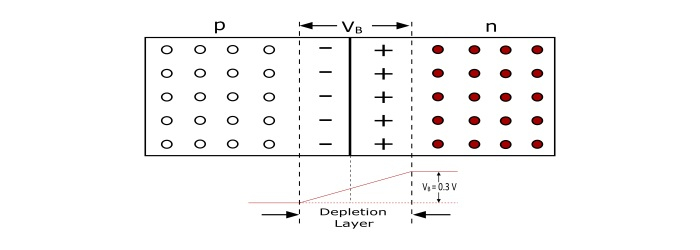
From the potential distribution diagram, it is clear that a potential barrier sets up which gives rise to electric field. This field prevents movement of the majority charge carriers across the junction. The region in the vicinity of the junction is known as Depletion Layer because the mobile charge carriers are depleted from this region.
Biasing of PN Junction
In electronics, Biasing mean the use of DC voltage to establish some operating conditions for an electronic device.
The biasing conditions for a pn–junction are of two types −
- Forward Biasing
- Reverse Biasing
Forward Biasing
When the external DC voltage is applied to the pn–junction in such a way that it cancels the potential barrier, thus permitting the current flow is called forward biasing.
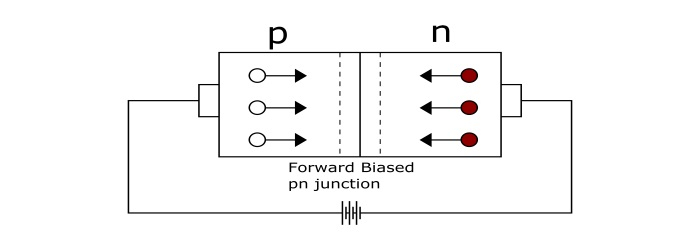

To make a pn–junction forward bias, the p–type material is connected to positive terminal of the battery and the n–type material to the negative terminal. The applied forward voltage establishes an electric field which acts in opposite direction the barrier potential. Since the barrier potential is very small, therefore a small forward voltage can eliminate the potential barrier. Once the potential barrier is eliminated, the junction resistance becomes almost zero and a forward current starts flowing through the circuit.
From the forward I-V characteristics of pn–junction, it can be seen that at first the forward current increases slowly and the resulting curve is non–linear. This is because the applied voltage is used up in overcoming the potential barrier. Once the applied voltage becomes greater than potential barrier, the pn–junction acts like an ordinary conductor. Hence the forward current increases very sharply with the increase in applied voltage. The curve is almost linear.
Reverse Biasing
When the external DC voltage applied across the pn–junction is in such direction that potential barrier is increased. It is called Reverse Biasing.
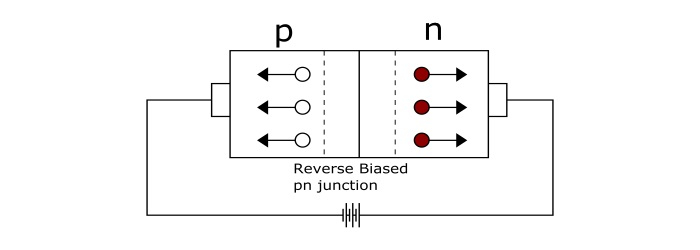

To make the pn–junction reverse biased, connect the negative terminal of battery to the p–type material and positive terminal to the n–type material. The electric field due to the applied reverse voltage acts in the same direction as the field due to potential barrier. The increased potential barrier prevents the flow of charge carriers across the junction. Hence, the junction offers very high resistance to the current flow.
From I–V characteristics of reverse biased junction, it can be seen that a small current of the order of a few μA flows in the circuit under reverse bias. This is called reverse leakage current and is due to minority charge carriers (electrons in the p–type and holes in the n–type). As the applied voltage is increased in the reverse direction a point is reached where breakdown of the pn–junction takes place and a high amount of current starts flowing through the pn-junction and the voltage corresponding to this point is called as breakdown voltage or Zener Voltage (VZ). The sudden rise of reverse current may damage the junction permanently due to excessive heat.

